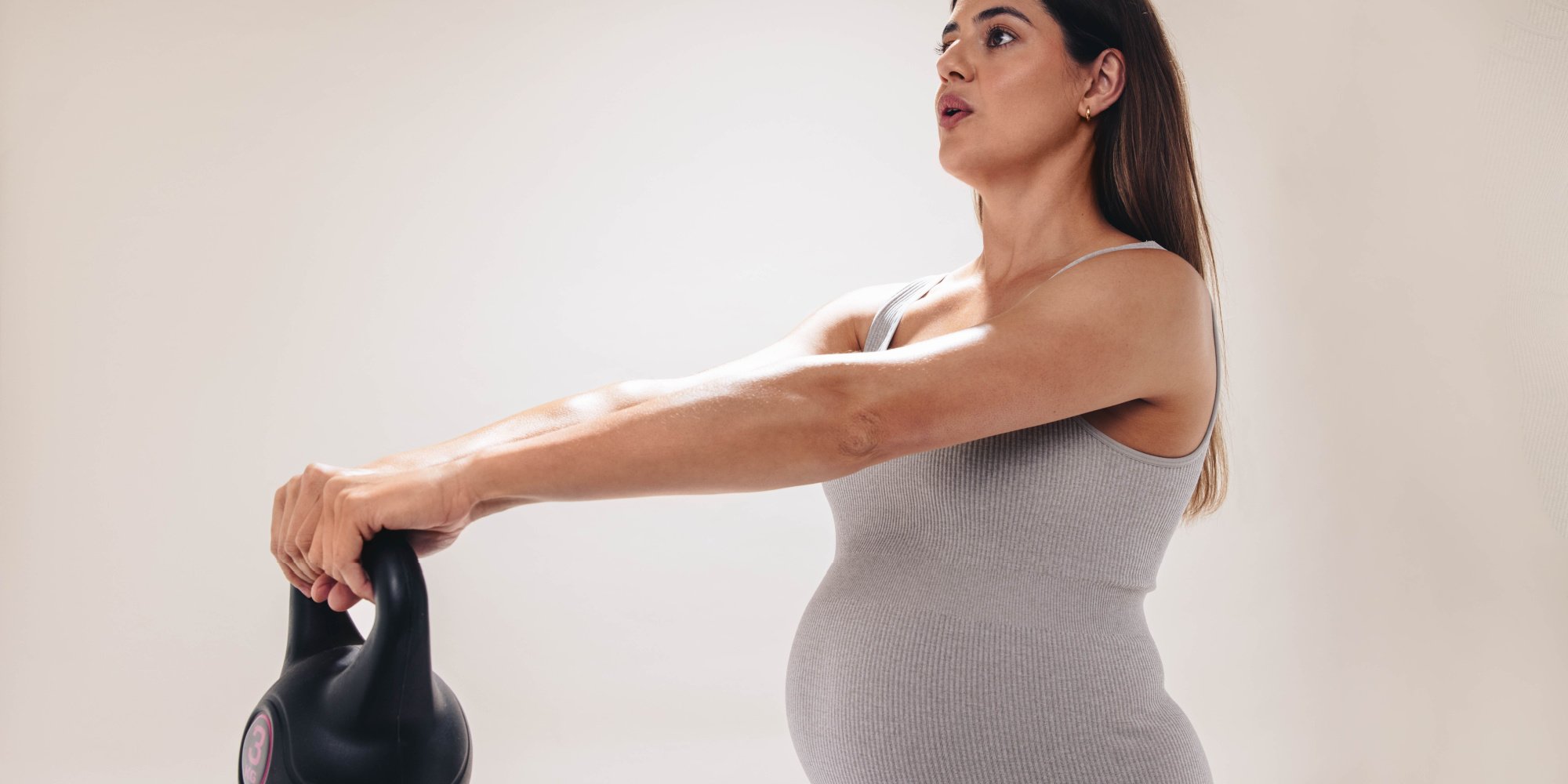Should I Continue Lifting Weights While I Am Pregnant?
Oct 19, 2023 mindpumpDespite the changes and obstacles you are bound to run into during your pregnancy (hello maternity clothes and heart burn), lifting weights should continue for most women. Just be sure to consult with your health care provider before engaging in physical activity.
If you have the all-clear from your doctor, lifting weights is safe and healthy for both you and your baby. Most women will find that pain and discomfort experienced during pregnancy is alleviated when they work out, while also keeping your heart, lungs, and blood vessels strong.
Here are more reasons why it is advantageous to lift weights during your pregnancy:
It can help you gain a healthy amount of weight. Women are naturally going to gain anywhere between 25 and 40+ pounds during their pregnancy; however, additional, unnecessary weight may be gained when physical activity slows down and healthy nutrition habits aren’t being practiced. By increasing daily calories by 200 to 400, and maintaining a consistent weight training schedule throughout your pregnancy, you are less likely to gain an unnecessary amount of weight.
Resistance training helps maintain muscle mass, which can make losing the baby weight a little easier. Muscle mass improves overall metabolism, therefore maintaining muscle mass will set you for success postpartum if losing the baby weight is one of your goals.
No one enjoys being stressed, and even more so when you’re pregnant. Lifting weights should be continued while pregnant as a tool to help ease or alleviate stress. High levels of stress during your pregnancy can cause health problems, like high blood pressure or your baby being born preterm. Staying healthy and lifting weights aids in reducing these health concerns.
Speaking of health concerns, another reason why you should continue lifting weights is that it decreases the likelihood of pregnancy complications, like preeclampsia and gestational diabetes. The positive health benefits you get from lifting weights doesn’t stop when you’re pregnant!
Regular exercise and lifting weights can also help prepare you for birth. Resistance training and recovery methods like yoga can help prepare you for the energy and strength needed during childbirth, while practicing good breathing techniques can be used to manage labor pains.
To ensure you are getting enough exercise, shoot for, on average, 30 minutes a day. Refrain from trying to achieve an all-out effort; lifting at a light to moderate intensity is still doing wonders for your overall health. For most women, you can continue with a similar lifting routine practiced prepregnancy, but modifications and a decrease in intensity will likely be required to reduce the risk of injury and pregnancy complications. We offer plenty of other resources for expecting moms, like the best exercises for women during pregnancy, and how often you should work out.
What happens if you still feel weary about lifting weights?
Fortunately, you have options! Don’t forget, there are always body weight exercises you can do, like squats, supported stationary lunges, and elevated push-ups. Using resistance bands is also a great option, which is great for those who aren’t too familiar with lifting weights, or just want something that is light and manageable. If using resistance bands seems like a better option for you, go for it! Whatever helps to keep you moving, maintaining muscle, and keeping both you and your baby healthy. I highly recommend MAPS Bands if you are unsure where to start!







